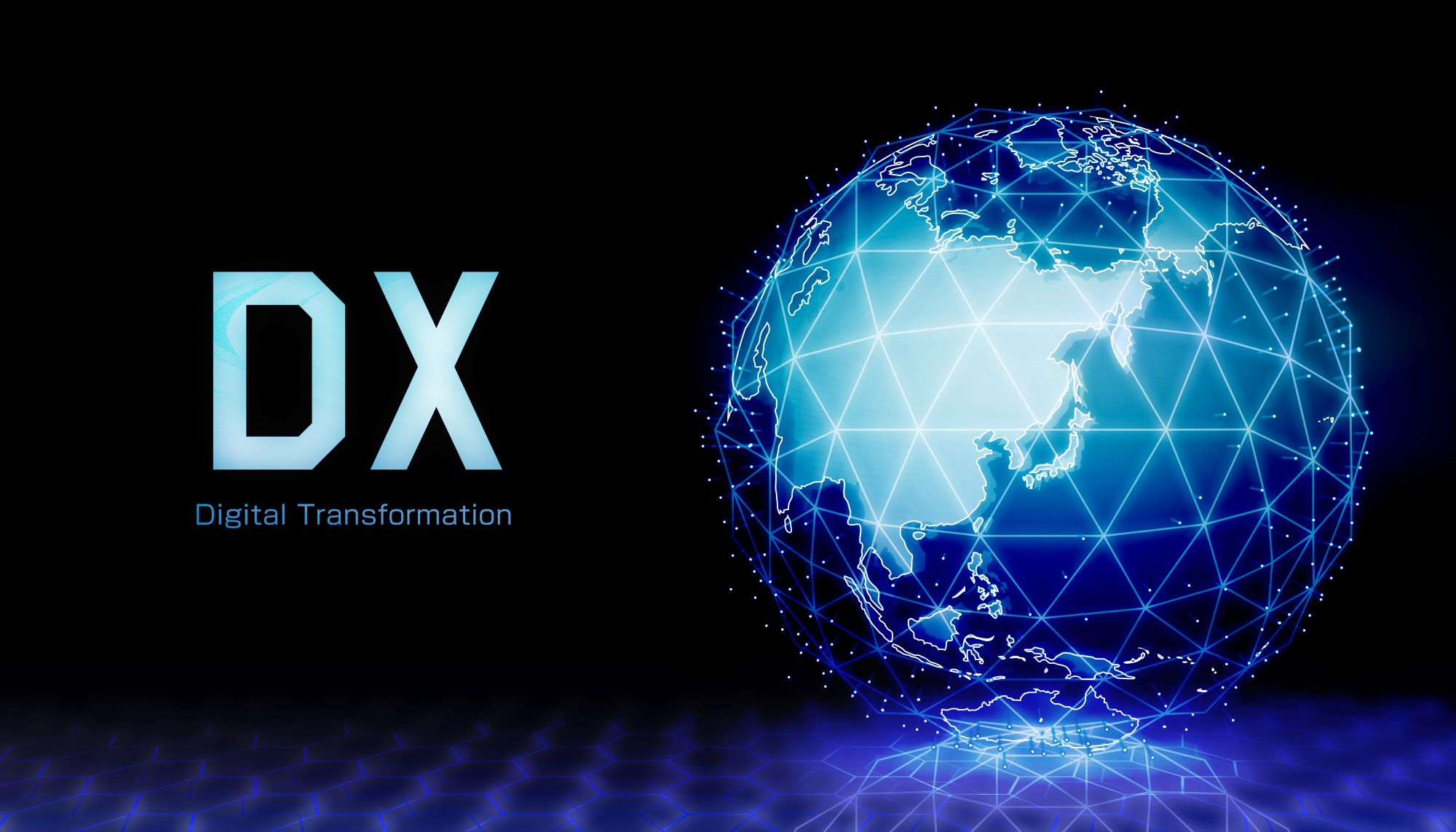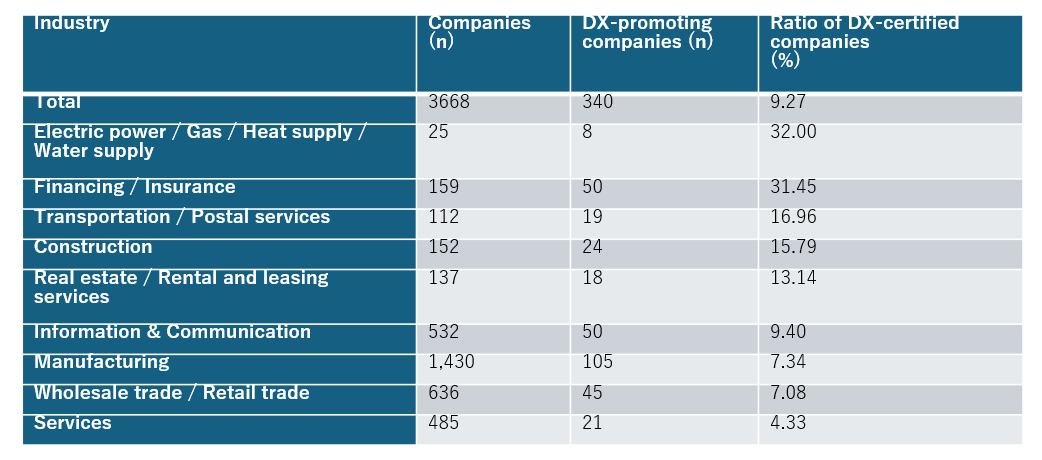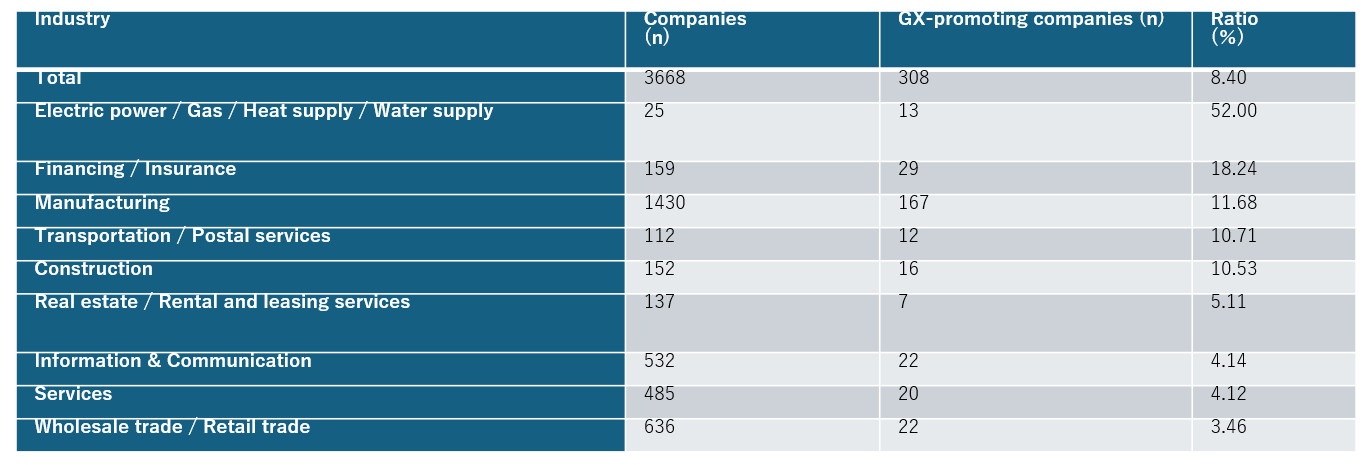
Current Status of Japan's DX/GX Policies and Company Activities for Their Simultaneous Promotion
March 25, 2024
R-2023-073E
Introduction
The concept of Digital Transformation (DX) was born in 2004 from Erik Stolterman's assertion that the proliferation of information communication technology (ICT) was changing all aspects of human life for the better [1]. In Japan, DX-related initiatives have been gaining momentum since around 2018, and policies for industrial DX are being formulated under the leadership of the Ministry of Economy, Trade and Industry (METI).
At the same time, a decarbonization movement is gaining momentum worldwide as a solution to the global climate change problem. Japan, too, has announced a commitment to reduce greenhouse gas emissions by 46% in fiscal year 2030 (from fiscal year 2013 levels) and achieve carbon neutrality by 2050 as part of the country’s efforts to solve this problem [2]. To attain these goals, Japan is formulating policies to realize a Green Transformation (GX), which aims for a major shift in industrial and energy policies.
This paper will introduce the Japanese industry's policies for the realization of DX and GX, focusing on the future of DX and GX and the modalities of their simultaneous promotion. The paper will then analyze corporate DX and GX indicators based on publicly available government data, and visualize the current status of initiatives by the industry sector.
1. Current status of DX and GX policies in Japan
The subject of this paper is corporate (industrial) DX and GX activities. Therefore, we discuss initiatives led by the Ministry of Economy, Trade and Industry (METI).
The release of the DX Report by METI in 2018 was a major step forward in the full-fledged advancement of DX policies. In this report, METI announced the so-called “2025 Digital Cliff,” suggesting that annual economic losses could reach up to 12 trillion yen after 2025 if existing systems, which have become complex, outdated, and black-boxed, remain in place, making companies acutely aware of the need for DX [3].
Since then, METI has formulated various measures to support companies’ DX promotion efforts, including the DX Promotion Indices in 2019 and the Digital Governance Code in 2020, as well as the DX Certification System and the selection of DX Stocks.
Regarding GX policies, METI announced the establishment of the GX League in 2022. Based on the GX League Basic Concept, the GX League will function as a forum in which a group of companies that boldly take on the GX issue will collaborate with the government to discuss the transformation of the entire economic and social system and practice for the creation of new markets [4]. The GX League has opened a call for companies that are willing to take up the challenge of transitioning to carbon neutrality as quickly as possible, with the following requirements: (1) implementation of initiatives to reduce their own emissions, (2) implementation of initiatives for carbon neutrality in the supply chain, and (3) implementation of initiatives in the marketplace through their products and services.
In February 2023, a Cabinet decision was made on the Basic Policy for the Realization of GX which outlines a roadmap of initiatives for the next 10 years. The government is also in the process of developing strategies for the fulfillment of commitments and the realization of GX.
2. Relationship between DX and GX
The relationship between the two transformations can be described in terms of “DX for GX realization” and “GX for DX realization.”
With regard to the former, it is critically important to promote DX in order to achieve carbon neutrality and GX. The roadmap mentioned above refers to “measuring circularity and CO2 emissions by leveraging information distribution platforms based on digital technologies and advocating disclosure, among other initiatives,” as well as “mobility-as-a-service (MaaS),” and “digital investment aimed at decarbonization” as activities that should be undertaken. This clearly demonstrates the crucial importance of DX for GX [5].
With regard to the latter, it is also critically important to advance GX in order to realize DX. Here we will examine the ICT infrastructure, which is one of the key technologies for the realization of DX, as an example. According to the White Paper on Information and Communications in Japan published by the Ministry of Internal Affairs and Communications, if current trends continue, power consumption associated with data centers and networks is projected to be more than 550 times higher than in 2018 [6]. This suggests that the increase in power consumption associated with the progress of DX cannot be ignored, and GX initiatives for a decarbonized society must be promoted in tandem with DX.
In view of the above, it is clear that the two transformations are very closely and critically related. In the Digital Governance Code 2.0, which was compiled as a revised version in 2022, there is an additional statement that DX and GX should be advanced in tandem, and companies are strongly expected to promote DX and GX simultaneously [7].
3. Current status of companies promoting DX and GX simultaneously
So what is the current status of DX/GX initiatives in the corporate world?
This paper summarizes the current macro status of DX and GX initiatives of companies listed on the Tokyo Stock Exchange (TSE) using publicly available data. The data used and the analysis method are as follows.
Used data:
Ⅰ. List of TSE-listed issues
To obtain data that systematically classifies industries, this study used the List of TSE-listed Issues published by the Japan Exchange Group [8].
Ⅱ. List of DX-certified Companies
We used publicly available data on the , which is provided by the Information-technology Promotion Agency, Japan (IPA) to promote digital management reform through DX. For the purposes of this analysis, the companies listed in the aforementioned data were considered “DX-promoting companies” and all companies were tabulated based on the dichotomous values of “whether they are DX-promoting companies or not” [9].
Ⅲ. GX League “Participating Company Profile
We used data from the Profiles of Participating Companies on the official website of the GX League. For the purposes of this analysis, the companies listed in the aforementioned data were considered “GX-promoting companies” and all companies were tabulated based on the dichotomous values of “whether they are GX-promoting companies or not” [10].
Analysis method:
Using the aforementioned three data sources, we created a data file containing data on a total of 3,686 listed companies, and analyzed the ratio of DX-promoting companies and GX-promoting companies in each industry, as well as companies that promote DX and GX simultaneously. Specifically, we classified companies into categories using the industry classification in Data I as a reference, and derived the ratios of the number of DX-promoting companies, the number of GX-promoting companies, and the number of companies promoting DX and GX simultaneously for each industry category.
The numbers of DX-promoting companies and GX-promoting companies for each industry category are as per the tables below.
Table 1 Ratio of DX-promoting companies by industry
Source: Created by the authors
Table 2 Number and ratio of GX-promoting companies by industry
Source: Created by the authors
As the tables show, policy-based DX and GX initiatives do not appear to be active at this time, with DX-certified companies and GX League participating companies each representing only about 10% of all listed companies.
Looking at the results by industry, it is extremely interesting to note that the percentage of engagement in DX initiatives in the “Electricity/Gas/Heat/Water Utilities” and “Finance/Insurance” categories is high, while the “Information & Communication” industry, which could play a leading role in DX, has only 4% engagement, which is relatively low among all industries. As for GX initiatives, in addition to the two industries mentioned above for their high percentage of engagement in DX, “Manufacturing” shows a relatively high percentage. Companies in this category make up half of the total number of listed companies participating in the GX League, demonstrating the strong interest in GX from the manufacturing sector.
Next, the table below shows the ratio of companies promoting DX and GX simultaneously.
Table 3 Number and ratio of companies promoting DX and GX simultaneously, and deduction from the ratio of DX-certified companies Source: Created by the authors
Source: Created by the authors
The results show that not only just 3.5% of listed companies promote DX and GX simultaneously, but also that the industries that had a high ratio of DX-promoting companies see a large drop in that ratio when simultaneous promotion is factored in. These results indicate that activities for simultaneous DX/GX promotion are still sluggish.
However, if we look at “Manufacturing,” we see that this industry is relatively active in promoting DX and GX simultaneously, despite the fact that the percentage is small due to the large number of companies in that sector.
It goes without saying that the realization of DX and GX is crucial for Japan. However, it can be argued that currently the two are often addressed as separate issues.
Conclusion
This paper focuses on the simultaneous promotion of DX and GX. It has long been a common story in traditional DX surveys that companies are slow to engage in DX initiatives. However, conducting a survey from the perspective of simultaneous promotion of DX and GX reveals new issues. The government needs to consider policies that promote both transformations simultaneously, instead of focusing on their separate implementation.
This time, the analysis was not based on subjective data such as questionnaires, but on systematic and objective data. In the future, when working on the realization of industrial DX and the simultaneous promotion of DX and GX, it will be essential to adopt an evidence-based policy making (EBPM) approach in order to present policies that are in line with reality.
References
[1] Erik Stolterman, Anna Croon Fors (2004). INFORMATION TECHNOLOGY AND THE GOOD LIFE. Information Systems Research. pp687–692.
[2] Ministry of the Environment, Japan (2021) Plan for Global Warming Countermeasures p11.
https://www.env.go.jp/content/900440195.pdf
[3] Ministry of Economy, Trade and Industry (2018) Report on Digital Transformation: Overcoming of '2025 Digital Cliff' Involving IT Systems and Full-fledged Development of Efforts for Digital Transformation p26.
https://www.meti.go.jp/shingikai/mono_info_service/digital_transformation/pdf/20180907_03.pdf
[4] Ministry of Economy, Trade and Industry, Industrial Science and Technology Policy and Environment Bureau, Environmental Economy Office (2022) GX League Basic Concept
https://www.meti.go.jp/policy/energy_environment/global_warming/GX-league/gxleague_concept.pdf
[5] Ministry of Economy, Trade and Industry (2023) The Basic Policy for the Realization of GX - A roadmap for the next 10 years - pp10-12.
https://www.cas.go.jp/jp/seisaku/gx_jikkou_kaigi/pdf/kihon.pdf
[6] Ministry of Internal Affairs and Communications (2023) 2022 White Paper on Information and Communications in Japan p228.
https://www.soumu.go.jp/johotsusintokei/whitepaper/ja/r05/pdf/00zentai.pdf
[7] Ministry of Economy, Trade and Industry (2022) Digital Governance Code 2.0 p2.
https://www.meti.go.jp/policy/it_policy/investment/dgc/dgc2.pdf
[8] Japan Exchange Group (2023) List of TSE-listed Issues
https://www.jpx.co.jp/markets/statistics-equities/misc/01.html
*Used publicly available data as of the end of January 2023.
[9] Information-technology Promotion Agency, Japan (IPA), DX Promotion Portal (2023) DX Certification System List of Certified Companies
https://disclosure.dx-portal.ipa.go.jp/p/dxcp/top
*Used publicly available data as of March 1, 2023.
[10] Ministry of Economy, Trade and Industry, GX League Profiles of Participating Companies
https://gx-league.go.jp/member/
*Used publicly available data as of March 1, 2023.

